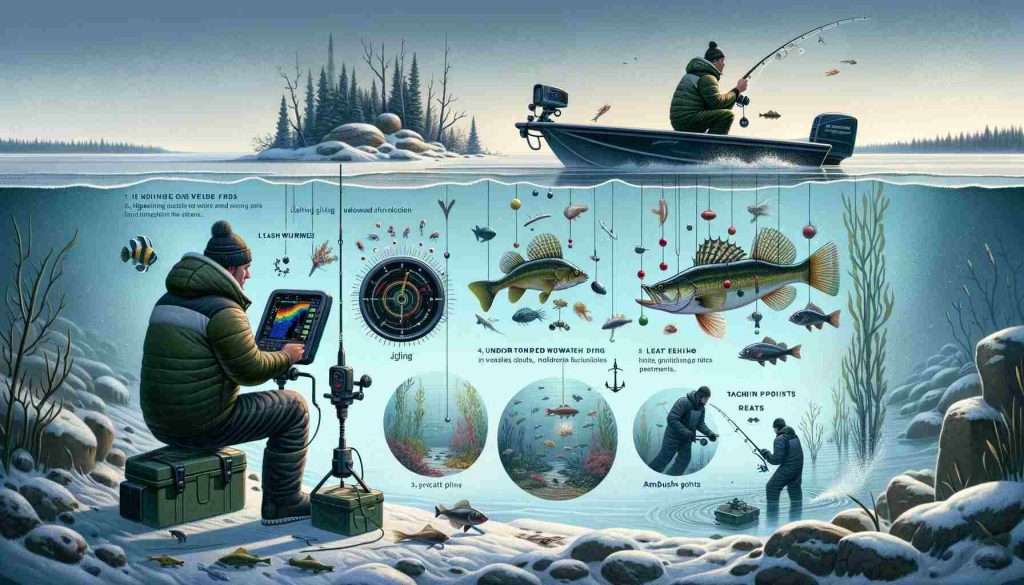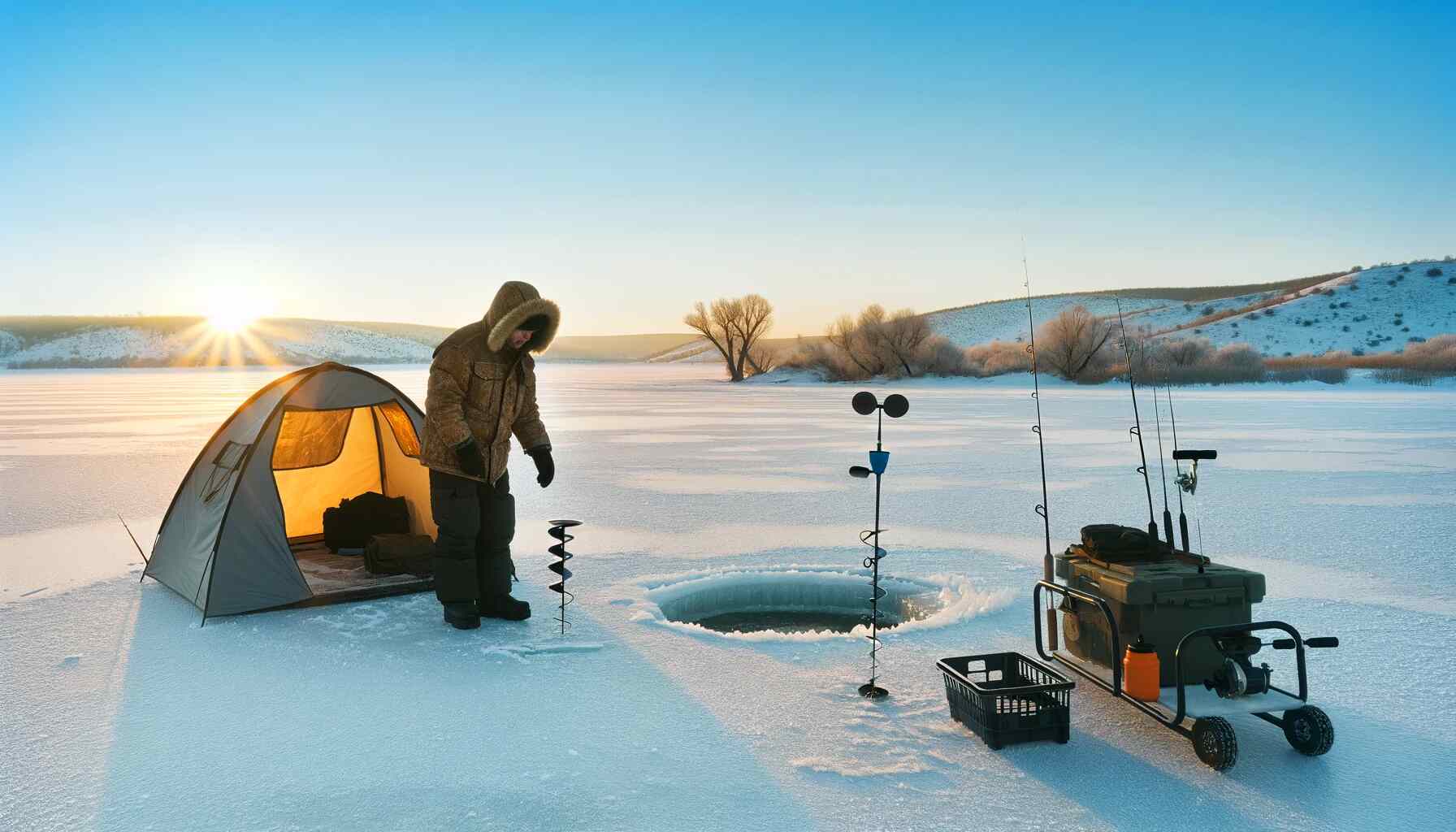Ice fishing is not just a pastime; it’s a passion for many outdoor enthusiasts. According to a study by the American Fisheries Society, ice fishing participation has been steadily increasing, with over 4 million participants in the United States alone. However, mastering the art of ice fishing requires more than just drilling a hole in the ice and dropping a line. It demands knowledge, skill, and a deep understanding of the environment.
Let’s explore everything you need to know to become a successful ice angler, from essential equipment and safety measures to advanced ice fishing techniques and insider tips.
Understanding Ice Fishing Basics
1. Equipment Essentials
Ice Auger
An ice auger is a vital tool for drilling holes through the ice. Manual augers require a physical effort but are quieter and lighter, while power augers are faster and more convenient but louder and heavier.
Look for a durable, reliable ice auger with sharp blades and easy-to-use features. Brands like Eskimo, StrikeMaster, and Ion offer excellent options in both manual and power augers.
Ice Fishing Rods and Reels
Opt for shorter, sensitive rods designed specifically for ice fishing. Pair them with small, lightweight reels equipped with smooth drag systems to handle the challenges of ice-angling effectively.
Invest in high-quality ice fishing rods and reels from reputable brands like St. Croix, Fenwick, and Abu Garcia.
Ice Fishing Line
Use low-visibility monofilament or fluorocarbon lines, as they are less likely to spook wary fish. Thinner lines offer better sensitivity, crucial for detecting subtle bites in cold water conditions.
Opt for premium monofilament or fluorocarbon lines from trusted manufacturers like Berkley, Sufix, and Seaguar.
Ice Fishing Baits and Lures
Experiment with a variety of baits and lures, including live bait such as minnows, worms, or waxworms, as well as jigs, spoons, and soft plastics. Match the size and color of your bait to the preferences of the target species.
Brands like Rapala, Clam, and Northland Fishing Tackle offer a wide selection of proven baits, jigs, spoons, and soft plastics in various sizes and colors.
Ice Shelter
A portable ice shelter or ice tent provides protection from the elements and enhances comfort during long hours on the ice. Choose a portable ice shelter or tent from reputable brands such as Eskimo, Clam Outdoors, or Frabill. Look for features like durable construction, insulated fabric, and easy setup to ensure comfort and protection from the elements on the ice.
2. Safety First
Ice Thickness
Always check the thickness of the ice before venturing into the frozen water. Ice thickness should be at least 4 inches for safe foot travel, 5-7 inches for a snowmobile or ATV, and 8-12 inches for a small vehicle. Be cautious around areas with moving water, such as inlets, outlets, and currents.
Safety Gear
Wear appropriate clothing for the cold conditions, including insulated waterproof boots, thermal layers, gloves, and a hat. Carry safety essentials such as ice picks, a throw rope, and a life jacket or floatation suit for emergencies.
Buddy System
Ice fishing alone is not recommended. Always fish with a friend or in groups for added safety. If one person falls through the ice, the others can provide assistance and seek help if needed.

Advanced Ice Fishing Techniques
The pursuit of ice fishing extends far beyond merely dropping a line through a hole in the ice; it’s a nuanced art form that demands a mastery of various ice fishing techniques.
1. Locating Fish
Using Sonar
Invest in a quality ice fishing sonar unit to locate fish, identify underwater structures, and determine the depth of the water. Modern sonar devices offer advanced features such as GPS mapping, flasher mode, and fish-finding technology, enhancing your chances of success.
Understanding Underwater Topography
Learn to interpret underwater topography and structure using contour maps and electronic mapping tools. Look for drop-offs, weed beds, submerged vegetation, and other features that attract fish throughout the winter months.
2. Presentation Techniques
Jigging
Master the art of jigging, a rhythmic up-and-down motion of the bait or lure designed to entice fish into striking. Experiment with different jigging cadences, speeds, and depths until you find what triggers a response from the fish.
Deadsticking
Practice deadsticking, a passive fishing technique that involves suspending a bait or lure motionless in the water column. Use a sensitive rod with a light tip and minimal resistance to detect subtle bites while maintaining a natural presentation.
Related Article: Most Popular Types of Fishing
3. Targeting Specific Species
Panfish
For panfish such as bluegill, crappie, and perch, use small jigs tipped with waxworms, spikes, or small minnows. Focus on shallow weed edges, drop-offs, and structure in the early morning or late afternoon when panfish are most active.
Walleye
Target walleye near rocky points, humps, and break lines using vertical jigging spoons, jigging Rapalas, or live minnows on tip-ups. Fish during low-light periods such as dawn, dusk, or after dark for the best results.
Northern Pike
For northern pike, set tip-ups with large live baitfish such as sucker minnows or shiners near weed beds, points, and ambush areas. Use heavy-duty tip-up rigs with steel leaders to prevent bite-offs from toothy predators.
Insider Tips and Tricks
1. Stay Mobile
Don’t hesitate to move around and drill multiple holes until you find active fish. Mobility is key to staying on top of changing fish patterns and maximizing your catch rate.
2. Be Patient
Ice fishing requires patience and persistence. Stay focused, observe underwater activity on your sonar, and give fish time to inspect and strike your bait or lure before attempting to set the hook.
3. Stay Organized
Keep your gear organized and readily accessible on the ice. Use tackle boxes, gear sleds, and rod holders to maintain order and efficiency throughout your fishing expedition.
4. Respect the Environment
Practice catch-and-release for trophy-sized fish, and adhere to local regulations regarding bag limits, size restrictions, and protected species. Leave the ice and surrounding area cleaner than you found it to preserve the beauty of nature for future generations.
Conclusion
Mastering the art of ice fishing is a rewarding journey that requires dedication, knowledge, and skill. By grabbing an understanding of the basics of equipment, safety, and advanced techniques, as well as incorporating insider tips and tricks, you can enhance your success and enjoyment on the ice.
Remember to respect the environment, stay safe, and cherish the unique experiences that ice fishing has to offer. Whether you’re a seasoned angler or a novice enthusiast, the thrill of a hard-fighting fish breaking through the frozen surface will keep you coming back for more, season after season. Happy fishing!




